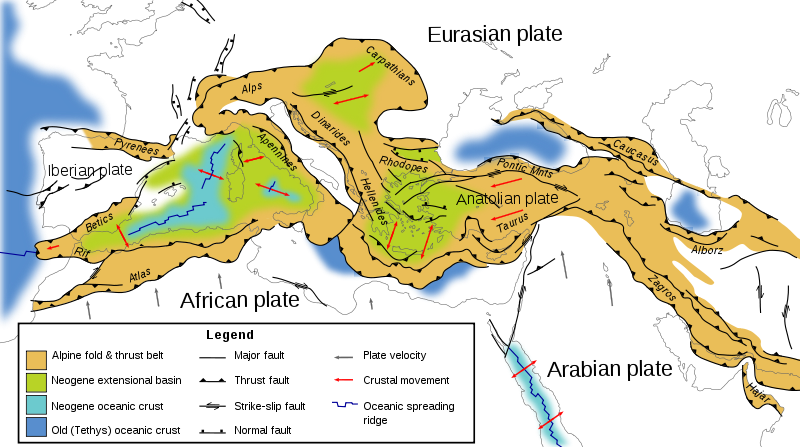... The most recent re-flooding of the med was the zanclean flood that ended the messinian salinity crisis. The Med has been 'wet' ever since then.
I think it likely there has always been a "wet Med" but that it has been much lower and smaller when not connected to the Atlantic Ocean - the river inflow is relatively small compared to the evaporation loss rate if it were as large as it is today.
... There is no evidence to support the reflooding of the med in the last 40k years. The only oceans that have reflooded in the time frame that humans have been on the planet are the likes of the dead sea, the caspian sea, and the black sea.
I don't agree. Here is part of why:
(1)
(2)
(3)
The associated text (of the source) is below
(1)”When fleets of ships carrying warriors from all over Greece set off to do battle with the great fortress city of Troy, perhaps some of them sailed from Pavlopetri, the oldest known submerged town.”
(2) “One kilometre out in the Mediterranean Sea, near Haifa, Israel, a village lies hidden beneath the waves. It has been so well preserved that weevils sit in the grain stores, human skeletons lie undisturbed in their graves, and a mysterious stone circle still stands as it was first erected.
(3) “On Egypt's northern coast, where the Nile delta meets the sea, there once stood two cities of such wealth and grandeur that they were famous throughout the ancient world. Today, their remains lie buried beneath a shallow bay.”
Quote and photos (limited by Sciforums computer to only three) from:
http://www.newscientist.com/special/drowned-cities-myths-secrets-of-the-deep
The New Scientist is not some rag publication. If you want that, see:
http://reinep.wordpress.com/2011/01/16/over-200-sunken-citys-found-in-the-mediterranean/ an article with title:
“Over 200 sunken cities found in the Mediterranean”
Harder to refute is the public presentation reported (with photos of artifacts) here:
http://s8int.com/water26.html Here is part of the text found there:
“On Saturday, Egyptian and foreign dignitaries, a large press and media contingent, archaeologists from around the world and geologists converged on Abu Qir where the results of the survey were disclosed at a grand event. A rapt audience was able to admire objects raised from the seabed, including a magnificent black granite torso of the goddess Isis wearing diaphanous dress fastened with the so-called "Isis knot" below her breast.
Meanwhile, underwater television footage revealed the cities of Canopus, Menouthis and Herakleion in all their detail. Well-preserved houses, temples, walls, a harbour and colossal statues reflected the wealth and luxury of the communities that once inhabited the area.
"The significance of the discovery of these major sites cannot be overestimated," said Franck Goddio, president of the European Institute of Marine Archaeology. "
This is from page 26 of a massive book (note the “26” in the link) which appears to be a collection of many different discoveries. Quite a few are off the coast of Cuba supporting the idea, very clearly shown in the continental shelf map of post 721, that there was a wide band of dry land between Cuba and Florida (wider than Florida is now). I.e. that the ocean levels were very much lower with no possible connection to the Mediterranean Lake (or a dry Mediterranean basin?).
On page 28 you can read:
“…Aside from the sonar signals that were used for this discovery a camcorder was also sent down to the archaeological deposit. Thanks to these images they have been able to find out enough anomalous data to stimulate interest in the discovery. Most of these blocks, that are
at a depth of 600 meters, have gigantic dimensions, reaching to five meters of height (16.5 feet)and several tons of weight.
It has been confirmed that the stones were cut, carved and polished to make fit them with others and thus to form greater structures. Concerning the strange inscriptions, which are similar to Egyptian hieroglyphics, very little is known except that they are very abundant and that they are in almost all the parts of the deposit. There have appeared as well, symbols and drawings whose meaning is not known. …”
I don’t have time (or inclination) to look at more than these three pages. Many different views are presented. Some submerged cities that are near coast lines are quite likely due to earthquakes but surely not those more than 600 meters below current sea levels.
SUMMARY: To again state the obvious: When ruins of cities exist more than 600 meters below current ocean levels, the Atlantic ocean was too low to be connected to the then smaller Mediterranean Sea (Surface evaporation balancing river inflow much like the Dead Sea does).







